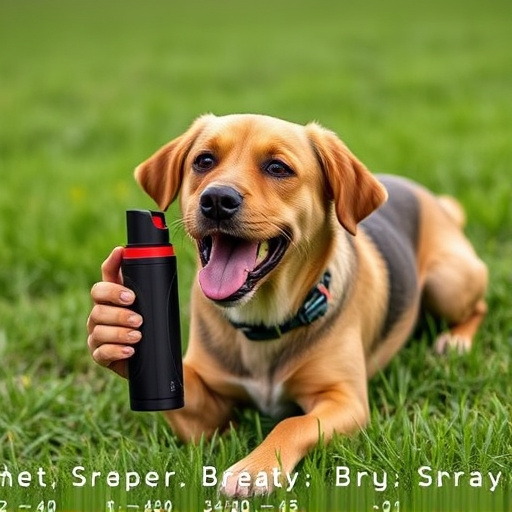Dog pepper spray defense relies on a 10-15 foot (3-4.5m) safe spraying distance for effective and safe deployment. Wind, dog size, spray type, and direction impact this range. Aim for the face, use as a last resort in immediate danger situations. Follow manufacturer instructions for optimal results while prioritizing animal welfare.
“Unleashing Protection: Exploring Dog Pepper Spray Defense. This comprehensive guide delves into the world of dog pepper spray, a powerful tool for self-defense. We unravel the science behind its effectiveness, focusing on understanding defense mechanisms and the critical factor of safe spraying distance. From identifying optimal application strategies to navigating potential challenges, this article equips you with knowledge. Learn how to use pepper spray responsibly and effectively, ensuring both your safety and the well-being of dogs in stressful encounters.”
- Understanding Dog Pepper Spray Defense Mechanisms
- Factors Influencing Safe Spraying Distance for Dogs
- Effective Strategies for Using Pepper Spray on Dogs
Understanding Dog Pepper Spray Defense Mechanisms
Dog pepper spray defense mechanisms are designed to provide a non-lethal way to deter and control aggressive canine behavior. Unlike traditional pepper spray, dog-specific formulations are crafted with safety in mind, ensuring minimal harm to the animal’s sensitive eyes and respiratory system. Understanding how these sprays work is key to effective deployment.
The safe spraying distance for dogs varies depending on factors like spray type, wind conditions, and the dog’s behavior. Typically, a 10-foot (3 meter) radius is recommended as a safe zone for application. This allows for control without causing excessive discomfort or danger to the pet. It’s crucial to follow manufacturer instructions, as different sprays may have specific guidelines regarding usage and safety measures.
Factors Influencing Safe Spraying Distance for Dogs
When considering dog pepper spray defense, understanding the safe spraying distance is paramount. Several factors significantly influence this critical aspect, ensuring both effectiveness and minimizing unintended harm to pets or bystanders. The primary influencers include wind speed and direction, which can carry the spray in unexpected ways. A gentle breeze might cause the spray to drift back towards the user, while a stronger gust could propel it far beyond the intended target, potentially endangering others.
The distance also depends on the dog’s size and agility. Smaller breeds may be less affected by a given amount of spray due to their lower lung capacity, whereas larger dogs can inhale more easily, increasing the effective range. Moreover, the type and power of the pepper spray itself plays a role; stronger formulations produce larger droplets that travel farther but may also increase the risk of cross-contamination or accidental exposure. Users must therefore balance effectiveness with caution, especially in environments shared by multiple animals or people.
Effective Strategies for Using Pepper Spray on Dogs
When considering dog pepper spray defense, understanding safe spraying distance is paramount. For optimal effectiveness and minimal risk to both you and your canine companion, maintain a distance of 10 to 15 feet (3 to 4.5 meters) while applying the spray. This allows for precise targeting while keeping yourself out of the direct path of any potential blowback.
Ensure the spray is aimed at the dog’s face, specifically the eyes and nose area, which are highly sensitive. A well-placed shot can quickly deter an aggressive dog without causing severe harm. Remember, pepper spray should be a last resort, only used when other non-lethal methods have failed or in situations posing immediate danger to your safety or that of others.
Dog pepper spray can be an effective deterrent and defense mechanism when used appropriately. Understanding the unique physiologic responses of dogs to capsaicin, the active ingredient in pepper spray, is crucial. Knowing the optimal safe spraying distance ensures minimal harm while maximizing effectiveness. By following evidence-based strategies, pet owners and professionals can safely utilize this tool as a last resort to protect against aggressive canine encounters. Remember, responsible use and awareness of factors influencing safe distance are key to a successful outcome.
